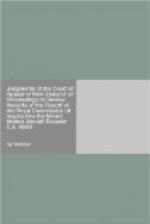In paragraph 44 the Report explains that the chief executive of the airline was told of this matter on 30th November. Then in paragraph 45 it is said that the chief executive “determined that no word of this incredible blunder was to become publicly known”. There follows a statement that a direction was thereupon given “that all documents relating to Antarctic flights, and to this flight in particular, were to be collected and impounded. They were all to be put on one single file which would remain in strict custody. Of these documents all those which were not directly relevant were to be destroyed”. The reference in this context to the amendment to the co-ordinates invites the question as to whether Mr Chippindale had been given that particular information by the airline during his own investigation. It is made plain in his own report that this had been done immediately.
He himself was not uncritical of the administrative work of the airline as it touched upon the fatal flight and concerning this matter he said:
“3.5 The flight planned route entered in the company’s base computer was varied after the crew’s briefing in that the position for McMurdo on the computer printout used at the briefing, was incorrect by over 2 degrees of longitude and was subsequently corrected prior to this flight.”
The variation in the computer after the crew of the DC10 had been briefed (as Mr Chippindale realized) is the matter which is mentioned by the Commissioner in paragraph 44 and which in paragraph 45 is offered as the motive for what is there described as an immediate decision by the chief executive that no word of the matter was to become publicly known, with documents to be impounded and others destroyed. This information was given into Mr Chippindale’s hands by Air New Zealand in a written statement on the day following his return from the crash site in Antarctica.
The Chippindale report then states in paragraph 3.6 that the computer error had remained in the flight plans for some fourteen months. Then it is said:
“3.7 Some diagrams and maps issued at the route qualification briefing could have been misleading in that they depicted a track which passed to the true west of Ross Island over a sea level ice shelf, whereas the flight planned track passed to the east over high ground reaching to 12450 feet AMSL.
3.8 The briefing conducted by Air New Zealand Limited contained omissions and inaccuracies which had not been detected by either earlier participating aircrews or the supervising Airline Inspectors.”
So these various matters (also mentioned by the Commissioner) were well within Mr Chippindale’s knowledge. However he came to a final conclusion that pilot error had been involved as a probable cause of the accident while the Commissioner (who decided this was an incorrect finding) was satisfied instead that the cause of the accident was not pilot error at all. He said:




